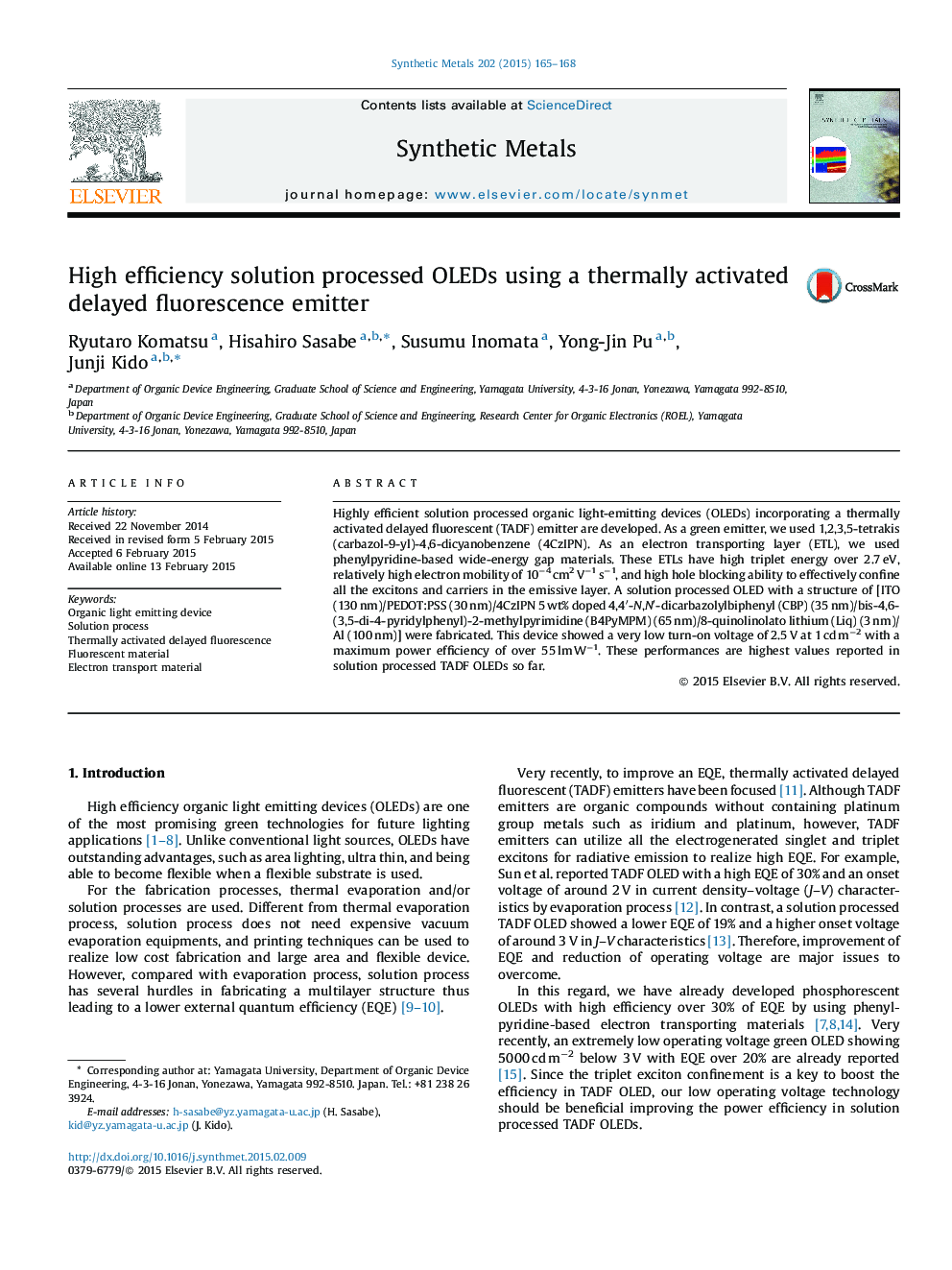| Article ID | Journal | Published Year | Pages | File Type |
|---|---|---|---|---|
| 1440684 | Synthetic Metals | 2015 | 4 Pages |
•Solution processed OLEDs based on as a green TADF emitter were fabricated.•High hole-blocking ability of phenylpyridine-based electron transporting materials improved the carrier recombination ratio.•The exciplex formed at host/ETL interface could greatly reduce the operating voltage.•An optimized device showed a very low turn-on voltage of 2.5 V at 1 cd m−2 with a maximum power efficiency of over 55 lm W−1.
Highly efficient solution processed organic light-emitting devices (OLEDs) incorporating a thermally activated delayed fluorescent (TADF) emitter are developed. As a green emitter, we used 1,2,3,5-tetrakis(carbazol-9-yl)-4,6-dicyanobenzene (4CzIPN). As an electron transporting layer (ETL), we used phenylpyridine-based wide-energy gap materials. These ETLs have high triplet energy over 2.7 eV, relatively high electron mobility of 10−4 cm2 V−1 s−1, and high hole blocking ability to effectively confine all the excitons and carriers in the emissive layer. A solution processed OLED with a structure of [ITO (130 nm)/PEDOT:PSS (30 nm)/4CzIPN 5 wt% doped 4,4′-N,N′-dicarbazolylbiphenyl (CBP) (35 nm)/bis-4,6-(3,5-di-4-pyridylphenyl)-2-methylpyrimidine (B4PyMPM) (65 nm)/8-quinolinolato lithium (Liq) (3 nm)/Al (100 nm)] were fabricated. This device showed a very low turn-on voltage of 2.5 V at 1 cd m−2 with a maximum power efficiency of over 55 lm W−1. These performances are highest values reported in solution processed TADF OLEDs so far.
Graphical abstractFigure optionsDownload full-size imageDownload as PowerPoint slide
